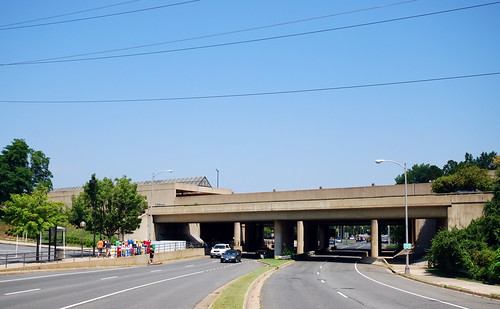Arlington County

, VA, where I live, is making improvements to the water infrastructure. As I understand it, they are cleaning and lining the water supply lines systematically across the county. I applaud the county for being proactive in preserving and extending the life of this vital infrastructure.
As the workers laid temporary water pipe in the streets in my neighborhood, I noted that there were several locations where they allowed the water to gush out, as shown in this video.
The water was gushing out into a pail that had holes cut in it, so that it would then flow away in the gutter. You can see my hand holding a watering can and filling it up with the flow. It took about 13 seconds to fill it to the 2-gallon mark. I calculate that flow to be a little more than 9 gallons per minute, 550 gallons per hour, 13,000 gallons per day. This was not, I should note, the only location where this was happening, although the flow at other locations I noticed was not quite as much.
The part of this that bothered me was not that the workers needed to set these temporary pipes as part of the maintenance program. It was that this was put in place several days before Memorial Day weekend, and the water kept gushing 24/7 before, after and through the entire 3-day weekend. I believe it was at least 10 days total that this gusher was in place on my street. Roughly 130,000 gallons from just this one spot. Water rates in Arlington are $11.74 per 1000 gallons, so the opportunity value of that water was about $1,500.
Another way to evaluate is that Arlington pays Washington Aqueduct $795 per million gallons. From that perspective, the 130,000 wasted gallons only cost the county $150. Makes one wonder about the difference.
Given that these crews have been working for many months, I would not be surprised if several million gallons of water has literally been washed away. The County, in fact (and ironically), maintains a
water conservation tips page.
There must be a better way to do this, particular on weekends and holidays. Obviously the contractors have no incentives to conserve the water. The county, though, does, since it has to pay for it. Also, it makes residents like me wonder how the county is working to conserve our resources and tax dollars when this simple, easy to see, wasteful practice is occurring right in front of our houses.











